How are sand dollars made? Both sexual and asexual reproduction make Sand Dollars. Broadcast spawning is used for sexual reproduction, while asexual reproduction occurs by cloning. Moreover, they reproduce by external fertilization.
The beauty of sand dollars can hardly be set too low. The intricate shell with flower pattern and unique characteristics are worth heart-robbing. So, to get all the quests answered, let’s dash ahead to the next section!
How Are Sand Dollars Made?
How is a sand dollar made? A sand dollar’s reproduction system is your answer. It gives rise to offspring through sexual and asexual means. Sexual reproduction is their prime mode of reproduction. However, asexual reproduction helps them withstand the predator.
How do sand dollars reproduce sexually?
Sand Dollars use a method called broadcast spawning for sexual reproduction. This method is very effective, especially in wet places like the sea.
The male and female sand dollars let go of their gametes into the water. These gametes then meet and make fertilized eggs. These eggs are yellowish, jelly-like, and about 135 microns wide.
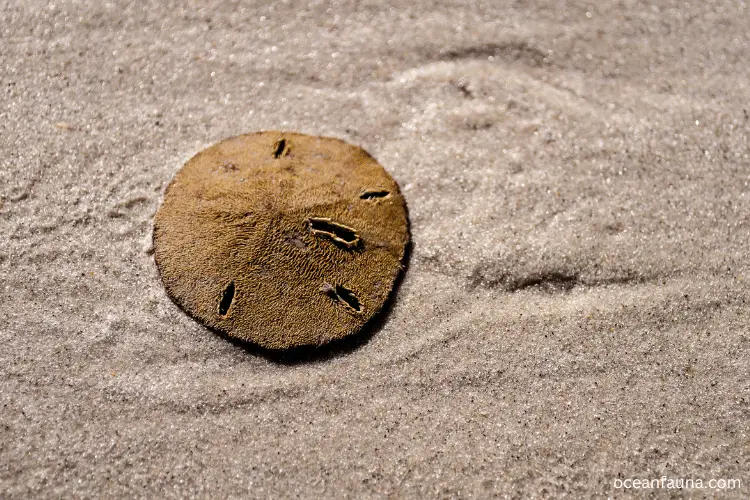
Broadcast spawning helps mix up the genes, making a strong breed. Once the egg is fertilized, it stays in an early stage for two days. Then, it moves on to the larval stage.
As time goes by, the larva grows into a young sand dollar. It develops its organs and systems for about three months. After that, it becomes a full-grown adult.
How do sand dollars reproduce asexually?
In addition to sexual reproduction, sand dollars undergo a form of asexual reproduction called cloning. This only happens when they are in the larval stage and they split to make identical copies.
But cloning isn’t easy. It takes a lot of food and energy. That’s why sand dollars only clone when the water is just the right temperature. Most of the time, sand dollars use cloning as a trick to stay safe from predators.
In one study, baby sand dollar larvae came into contact with fish mucus. Right away, they started cloning themselves. This made it easier for them to avoid being seen by predators.
How Are Sand Dollars Made? Anatomical Discussion
Sand dollars are fascinating and unique invertebrates that belong to the echinoderm family. They are built in a way that lets you slice them into five equal parts around a center point. Their hard skin is made up of calcium carbonate plates. It offers protection and helps them survive even in harsh marine environments like the ocean.
Test or Exoskeleton
Sand dollars have a hard shell called a test. It’s made of special plates of CaCO3. The test is arranged in a five-fold radial pattern and covered with cilia and spines on both sides, which give it a velvety feel.
Mouth and Digestive System
The bottom side of the test contains the mouth, which leads to a complex digestive system. Sand dollars have a unique way of feeding, using their small hair-like cilia to move small particles and plankton into their mouth. Their food is then digested in a specialized stomach before the body absorbs it.
Water Vascular System
Sand dollars have a complex network of tubes that help them breathe and move around. These tubes are filled with seawater, which is pumped through the body by a system of muscles and small tube feet. These tube feet are also used to help sand dollars move around on the ocean floor.
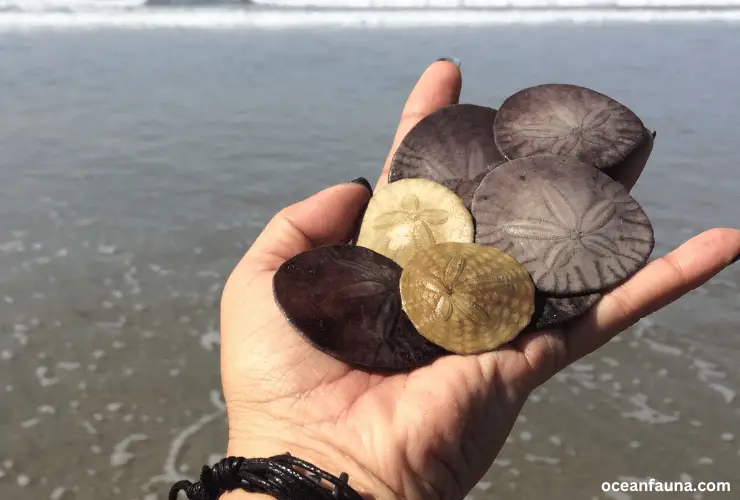
Nervous System
Sand dollars have a simple nervous system that helps them sense and respond to their environment. They have a ring of nerves around their mouth, which helps them detect food and other stimuli. They also have nerve fibers throughout their body that help coordinate their movements and responses.
How Long Does It Take for a Sand Dollar to Mature?
After fertilization, a sand dollar takes about 12 weeks to fully grow. During this time, it goes through all its stages to become a mature adult. Yet, the sand dollar is ready for mating by the time it reaches four years old.
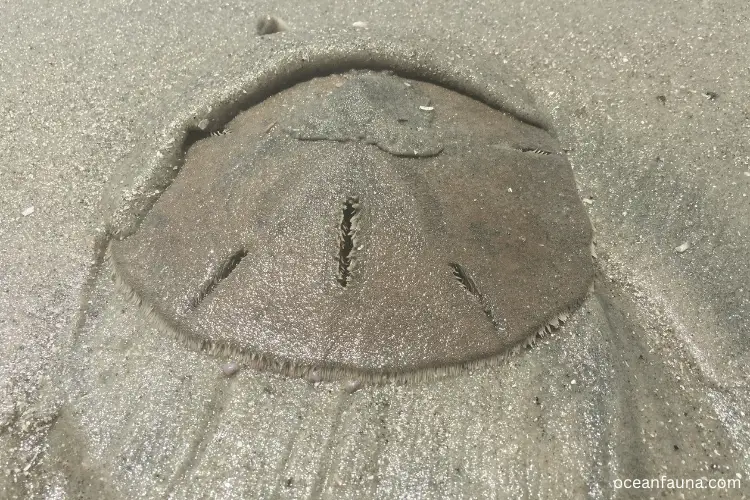
Do Sand Dollars Have a Mating Season?
Yes! Summer is counted as the best time for mating and spawning for sand dollars. These minute creatures spawn only once a year in a limited period of two months (1st May to 30th June). However, sometimes, it extended to late summer, too (July and August).
Are Sand Dollars Monoecious?
No! Sand dollars are not monoecious. Instead, they are mostly dioecious. The male and female gametes are present in separate individuals. Therefore, they don’t undergo self-fertilization also.
Although a few species of Sand Dollars are occasionally known to be monoecious, self-fertilization wasn’t found in them either.
Do Sand Dollars Undergo Internal Fertilization?
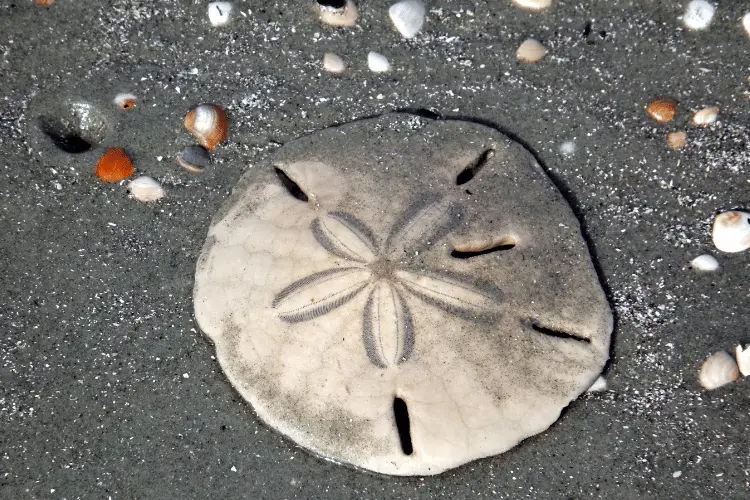
No! Sand dollars don’t undergo internal fertilization. Internal fertilization involves the fusion of gametes within the female reproductive system. However, in sand dollars, both sexes simultaneously release their gametes in the water column.
The sperm reaches the egg in a moist environment, and fertilization occurs. Thus, sand dollars undergo external fertilization.
Do Sand Dollars and Sea Urchins Reproduce in the Same Way?
Yes! Sand dollars and Sea urchins reproduce more or less in the same fashion. Both reproduce sexually using a strategy termed broadcast spawning. However, when eyeing asexual reproduction, the mode of division differs.
Sand Dollars reproduce at the larval stage by cloning. However, Sea Urchins multiply asexually by autotomy in addition to cloning or fission. Both organisms undergo asexual reproduction as a self-defense strategy.
FAQs
How many eggs do female sand dollars lay each year?
A female sand dollar lays nearly 3 lac 50 thousand (350,000) eggs yearly. However, not all of them fertilize and develop into offspring. Many are lost due to water currents and other climatic challenges.
Why do Sand Dollars reproduce asexually?
Sand Dollars reproduce asexually by cloning. The reason is not to increase their numbers but to defend and protect themselves. Due to external fertilization, they come with no parental care at all. So, they clone to reduce their size and thus escape the eye of predators.
Are Sand Dollars hermaphrodite?
Yes, but not all! Hermaphrodites are organisms that contain both sexes on the same individual. Not all the species of Sand Dollars are hermaphrodites. However, some species are known to exist as hermaphrodites (although rarely). The first case was reported in 1968 on Swans Island.
Why did my sand dollar turn green?
If your sand dollar turned somewhere between mossy green to white, it means it is dead. Therefore, looking for other hints like movement and spines is better. If it isn’t moving and shedding off the spins, they clearly signify the death of sand dollars.
Do sand dollars live in colonial form?
No! Sand Dollars don’t live in colonial form. They live in a clustered or crowded form called Purses. The reason is that this adds to the reproduction process by increasing the chances of mating and fertilization. However, they don’t distribute labor as colonial organisms do.
How many species of Sand Dollars are there?
Currently, there are eleven known species of Sand Dollars. Among them, Echinarachnius parma is the most commonly found sand dollar. They are usually found in the low tidal region of the Atlantic, Caribbean, and Pacific Oceans.
Final Words
To wind it up, sand dollars are made by broadcast spawning. It is a mode of sexual reproduction. But they also undergo cloning (asexual way) during the larvae stage. However, it is done as a self-defense mechanism against the predator.

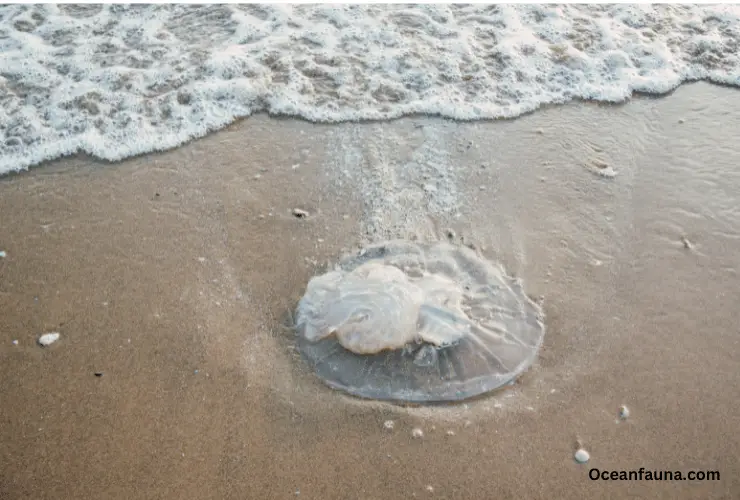
1 thought on “How Are Sand Dollars Made? [Anatomy & Reproduction]”